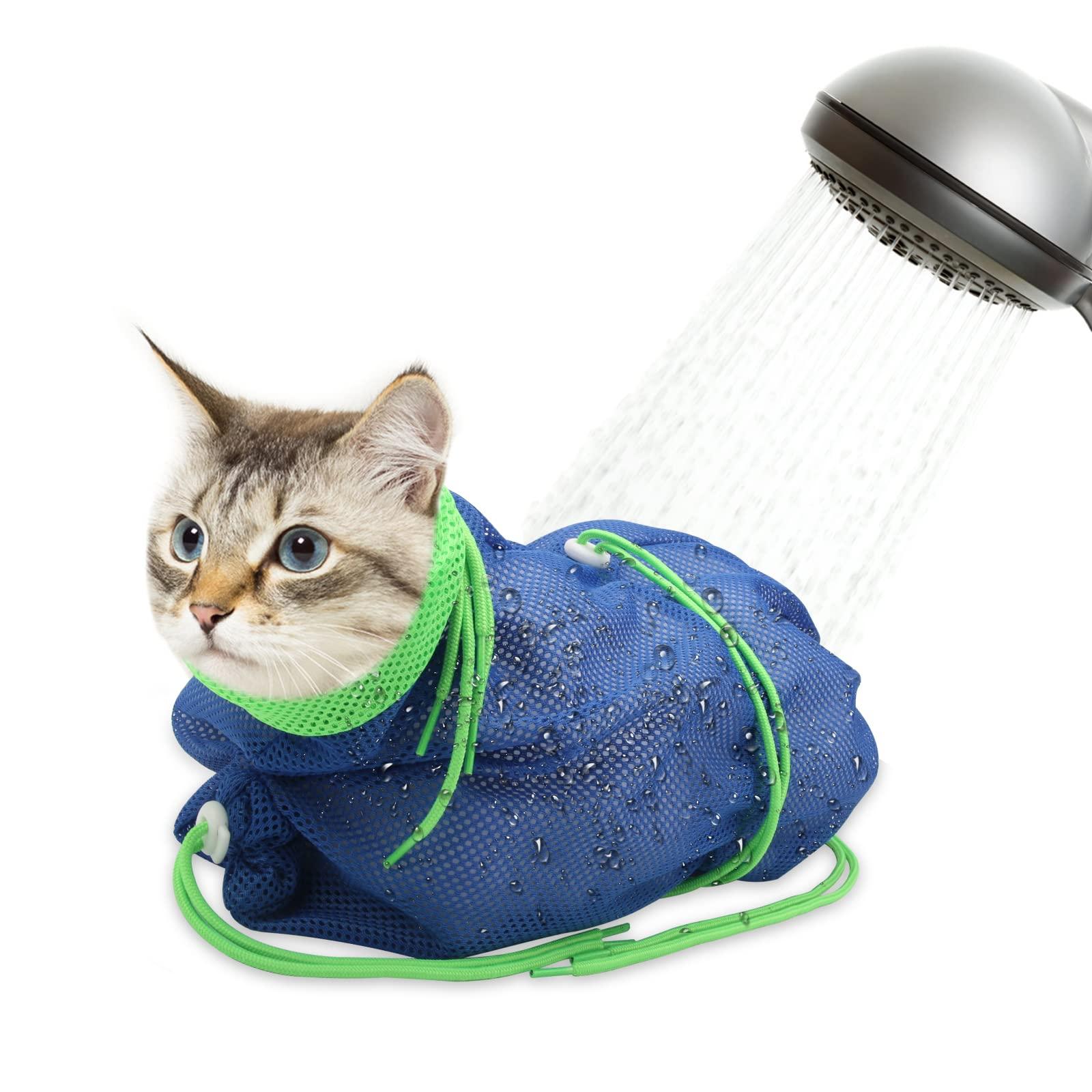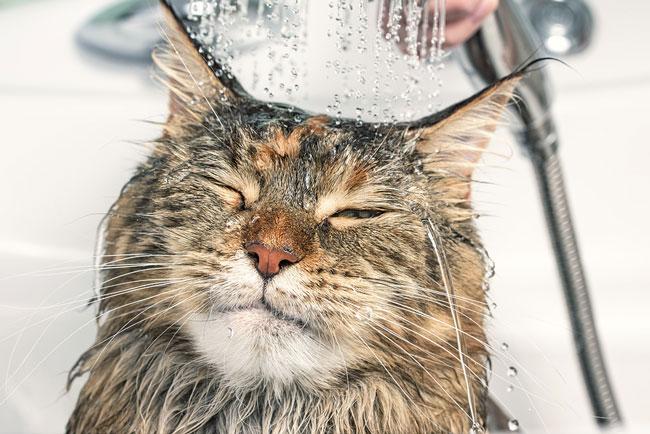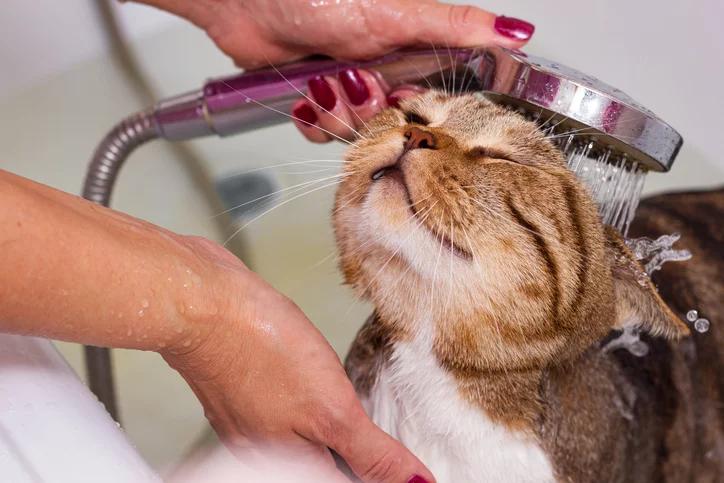When it comes to keeping our feline friends happy and healthy, tackling the issue of fleas is a top priority for many cat owners. With a myriad of flea treatments available, you may find yourself wondering whether a bath is necessary before applying the treatment. Should you suds up your kitty and risk a wrestling match in the tub, or is it better to skip the bath altogether?
In this article, we’ll explore the ins and outs of bathing your cat before flea treatment, providing you with valuable tips and insights to ensure success. Whether you’re a seasoned pet owner or a new cat parent, understanding the best practices for flea management will help you make informed decisions for your furry companion. Let’s dive in!
Table of Contents
- Understanding the Importance of Bathing Before Flea Treatment
- Choosing the Right Products for Your Cats Bath
- Steps to Ensure a Stress-Free Bathing Experience
- Post-Bath Care and Effective Flea Treatment Tips
- Q&A
- The Conclusion

Understanding the Importance of Bathing Before Flea Treatment
Bathing your cat before applying flea treatment is a crucial step that can significantly enhance the effectiveness of the treatment. A clean coat allows the topical treatment to penetrate better, ensuring that it reaches the skin where fleas reside. Additionally, a bath helps to remove any dirt, oil, or debris that might hinder the treatment’s efficacy. If your cat has a lot of loose fur or dander, bathing can help eliminate these barriers, creating a more favorable environment for the active ingredients to work effectively.
Here are some key reasons to consider bathing your cat before flea treatment:
- Enhanced absorption: A clean coat improves the absorption of flea treatment into the skin.
- Flea removal: Bathing can help wash away adult fleas and eggs, reducing the infestation level.
- Conditioning: It provides an opportunity to check for any skin irritations or infections that may need attention.
- Comfort: A clean cat is generally more comfortable and less stressed during the treatment process.

Choosing the Right Products for Your Cats Bath
When it comes to bathing your cat, selecting the appropriate products is crucial for ensuring a stress-free experience for both you and your furry friend. Look for shampoos specifically formulated for cats, as their skin has different pH levels compared to dogs. Gentle, hypoallergenic formulas are ideal, as they minimize irritation and keep your cat’s skin healthy. Avoid human shampoos and products that contain fragrances or harsh chemicals, as they can lead to allergic reactions or skin problems. Some recommended product types include:
- Cat-specific shampoos that target fleas and ticks
- Moisturizing conditioners to help with dry skin
- Waterless cat shampoos for quick clean-ups
Additionally, consider using natural alternatives like oatmeal or aloe vera-based products, which are known for their soothing properties. Before applying any product, do a patch test on a small area of your cat’s skin to ensure there’s no adverse reaction. It’s also wise to consult with your veterinarian for product recommendations tailored to your cat’s specific needs, especially if they have any pre-existing skin conditions. Below is a simple comparison of product types you might consider:
| Product Type | Benefits | Considerations |
|---|---|---|
| Cat-Specific Shampoo | Gentle on skin, effective flea treatment | Ensure it’s free of strong fragrances |
| Waterless Shampoo | Convenient for quick clean-ups | May not be suitable for very dirty cats |
| Natural/Shampoo | Soothing for sensitive skin | Check for allergens in ingredients |
Steps to Ensure a Stress-Free Bathing Experience
Creating a calm environment is the first step in ensuring a stress-free bathing experience for your cat. Start by selecting a quiet and comfortable space where both you and your cat can feel at ease. You might consider placing a non-slip mat in the tub or sink to give your cat a sure footing. It’s also a good idea to gather everything you need beforehand, from cat-friendly shampoo to towels, so you won’t need to leave your cat unattended. Play soft music or talk gently to your cat throughout the process to keep them relaxed.
Timing is crucial; choose a moment when your cat is typically more docile, such as after a meal or playtime. When introducing your cat to the bathing process, do it gradually. Begin by wetting their paws before moving up to the body, and use warm water to avoid shocking them. After applying the shampoo, make sure to rinse thoroughly, as leftover residue can cause irritation. Keep treats nearby as a reward for good behavior, reinforcing the notion that bath time can be rewarding!
Post-Bath Care and Effective Flea Treatment Tips
Once your cat has enjoyed a refreshing bath, it’s essential to focus on their post-bath care. Ensure your feline friend is completely dry, as cats are sensitive to cold temperatures. Wrap your cat in a warm towel and allow them some quiet time to relax. Using a gentle brush can help remove any remaining loose fur and dander, promoting a healthier coat while also providing a soothing experience for your pet. Remember to keep the environment calm, as sudden noises or movements can stress your cat after a bath.
When it comes to flea treatment, timing is crucial. If you have applied a topical treatment, wait at least 24-48 hours after bathing your cat to ensure the product has time to settle and work effectively. For maximum effectiveness, follow these tips:
- Choose Quality Products: Select veterinarian-recommended flea treatments.
- Follow Instructions: Use the product as directed for the cat’s weight and age.
- Regular Treatments: Schedule regular flea prevention treatments monthly.
- Vacuum and Clean: Regularly clean your home to eliminate flea eggs and larvae.
| Flea Treatment Options | Application Method | Frequency |
|---|---|---|
| Topical treatments | Applied to the skin along the back | Monthly |
| Oral medications | Administered via mouth | Monthly |
| Flea collars | Worn around the neck | Up to 8 months |
Q&A
Q&A:
Q1: Is it necessary to bathe my cat before applying flea treatment?
A1: While it’s not strictly necessary, bathing your cat before applying flea treatment can enhance the effectiveness of the treatment. A bath can help remove dirt, oils, and loose fur, allowing the flea medication to penetrate the skin better. However, if your cat is particularly stressed by bathing, it’s best to consider alternative options.
Q2: What type of shampoo should I use for my cat?
A2: If you decide to bathe your cat, use a cat-specific shampoo that is gentle and free of harsh chemicals. Avoid using human shampoos, as they can irritate your cat’s skin. Look for products that are specifically designed to combat fleas, if available, but always read the label for safety.
Q3: How can I make the bathing process easier for my cat?
A3: To make bathing less stressful, prepare the bathing area in advance. Use lukewarm water, and consider using a non-slip mat in the tub or sink. Speak to your cat in a calm and soothing voice, and have treats on hand to reward good behavior. If your cat is particularly anxious, consider a quick rinse instead of a full bath.
Q4: How long should I wait after bathing to apply flea treatment?
A4: After bathing, it’s advisable to wait until your cat’s fur is completely dry before applying the flea treatment. This is usually around 24 hours. Check the instructions of the flea treatment you are using, as some products may have specific recommendations regarding bathing.
Q5: What are some alternatives to bathing my cat?
A5: If your cat hates water or you’re concerned about bathing them, consider using a flea comb to remove fleas and debris. You can also give your cat a gentle wipe-down using a damp cloth or pet-safe grooming wipes. These methods can help prepare your cat for flea treatment without the stress of a bath.
Q6: How often should I bathe my cat for flea control?
A6: Generally, bathing is not required on a regular basis for flea control. Instead, focus on regular flea treatment and preventive measures such as using flea collars, topical treatments, or oral medications as recommended by your veterinarian. Bathing every few months can help if your cat spends a lot of time outdoors, but be mindful of your cat’s comfort and stress levels.
Q7: What should I do after applying flea treatment?
A7: After applying the flea treatment, monitor your cat for any adverse reactions, such as excessive scratching or signs of distress. It’s also important to keep your cat away from other pets and young children until the treatment has dried, as per the product instructions. Regularly vacuum your home and wash your cat’s bedding to minimize flea infestation.
Q8: Can I bathe my cat and still use flea treatment at the same time?
A8: It’s generally not recommended to bathe your cat and apply flea treatment simultaneously. Water can wash away the treatment before it has a chance to work effectively. Instead, choose one method at a time—bathe first, then apply the flea treatment once your cat is dry.
Remember, each cat is unique, so it’s important to consider your pet’s individual needs and consult your veterinarian for the best flea control methods for your furry friend!
The Conclusion
bathing your cat before applying flea treatment can be a helpful step in ensuring the effectiveness of the product and the comfort of your furry friend. By understanding your cat’s coat, the specific flea treatment you are using, and how to make bath time a pleasant experience, you can set the stage for a successful flea prevention strategy. Remember, each cat is unique, so always consider your feline’s personality and preferences when deciding to bathe. With a little preparation and patience, you can keep your cat flea-free while maintaining their happiness. If you have any concerns or questions about flea treatment or bathing, don’t hesitate to consult your veterinarian. Here’s to enjoying a happier, healthier, and flea-free life with your beloved pet!


